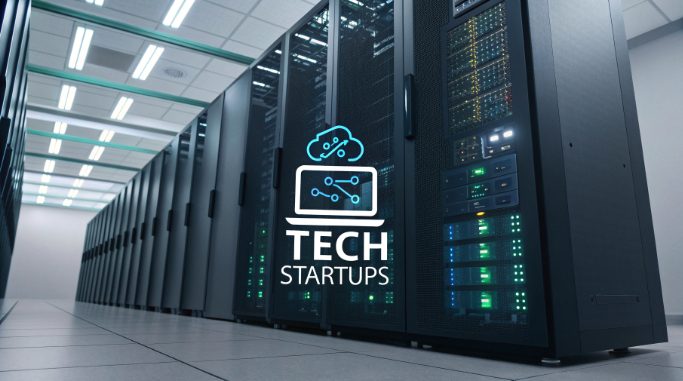Essential Server Selection Guide for Tech Startups

The Strategic Importance of Server Infrastructure
For tech startups navigating the complex landscape of server infrastructure in 2025, choosing the right server hosting solution has become more critical than ever. With the exponential growth in data processing requirements and the emergence of AI-driven applications, startups must carefully evaluate their server selection to ensure optimal performance, scalability, and cost-effectiveness. The rise of quantum computing compatibility and environmental sustainability requirements has added new dimensions to infrastructure planning, making it essential for startups to future-proof their server architecture decisions.
Performance Configuration and Budget Optimization
When architecting your server infrastructure, several key performance metrics require careful consideration:
- CPU Architecture: Latest generation processors with optimal core-to-thread ratios, including support for AI acceleration units and quantum-ready instruction sets. Consider AMD EPYC 9004 or Intel Xeon 4th Gen processors for maximum performance density.
- Memory Configuration: DDR5 RAM with ECC support for data integrity, with configurations starting at 256GB for AI workloads. Consider CXL memory expansion capabilities for future scaling.
- Storage Solutions: NVMe SSDs for high IOPS requirements, with multi-controller architectures supporting up to 7GB/s read speeds. Implement tiered storage with QLC drives for cold storage.
- Network Interface: 25GbE or 100GbE connectivity options, with SR-IOV support for virtual machine optimization and RDMA capabilities for high-performance computing workloads.
Geographic Distribution and Network Quality
Server location significantly impacts application performance and user experience. Consider these factors:
- Edge Computing Benefits: Reduced latency through strategic server placement, with edge nodes processing data within 50ms of end users. Implement 5G integration for mobile-first applications.
- Network Redundancy: Multiple tier-1 providers for reliable connectivity, including submarine cable diversity for international operations. Maintain N+1 redundancy for critical network paths.
- CDN Integration: Global content delivery optimization with automatic failover and real-time traffic routing based on network conditions. Implement HTTP/3 for improved performance.
- Cross-Region Load Balancing: Intelligent traffic distribution using ML-powered routing algorithms and real-time health checks with sub-second failover.
Security Architecture Implementation
Modern security challenges require a comprehensive approach:
- DDoS Protection: Advanced mitigation systems with ML capabilities, supporting up to 800 Gbps of scrubbing capacity. Implement behavioral analytics for early threat detection.
- Zero Trust Architecture: Implement strict access controls with biometric authentication and hardware security modules (HSMs) for key management.
- Data Encryption: At-rest and in-transit protection using quantum-resistant algorithms and automated key rotation policies.
- Security Compliance: SOC 2 Type II and ISO 27001 standards, with continuous compliance monitoring and automated security posture assessment.
Scalability and Elastic Resources
Design for growth with these scaling considerations:
- Containerization Support: Kubernetes-ready infrastructure with service mesh integration and automated container security scanning.
- Auto-scaling Capabilities: Dynamic resource allocation based on ML-powered predictive analytics and custom metrics.
- Multi-zone Deployment: Geographic redundancy with active-active configurations and automated failover testing.
- Microservices Architecture: Distributed system support with service discovery and circuit breaker patterns.
Provider Evaluation Criteria
Assess potential hosting providers based on:
- Technical Expertise: Specialized support teams with 24/7 availability and proven experience in your technology stack.
- Infrastructure Innovation: Regular hardware updates with a clear roadmap for quantum computing integration.
- Service Level Agreements: 99.99% uptime guarantees with financial compensation for breaches.
- Performance Monitoring: Real-time metrics and analytics with AI-powered anomaly detection.
Operational Efficiency
Streamline management with these operational tools:
- Infrastructure as Code (IaC): Automated provisioning using Terraform or Pulumi with custom providers for specialized workloads.
- Monitoring Solutions: Prometheus and Grafana integration with ML-powered alerting and custom dashboards.
- Backup Systems: Automated snapshot management with immutable backup storage and instant recovery capabilities.
- CI/CD Integration: Seamless deployment pipelines with automated security testing and performance validation.
Compliance and Risk Management
Address regulatory requirements through:
- Data Residency: Geographic compliance consideration with automated data classification and movement controls.
- Privacy Standards: GDPR and CCPA compliance with privacy-by-design principles and automated PII detection.
- Industry Certifications: PCI DSS for payment processing with quarterly automated compliance checks.
- Audit Trails: Comprehensive logging systems with blockchain-based immutable audit records.
Cost Optimization Strategies
Maximize ROI with these approaches:
- Resource Utilization: Performance per dollar metrics with AI-powered resource optimization recommendations.
- Reserved Instances: Long-term commitment benefits with hybrid pricing models and automatic instance right-sizing.
- Spot Instance Usage: Non-critical workload savings with automated failover to on-demand instances.
- Cost Attribution: Granular resource tracking with ML-based cost anomaly detection.
Practical Implementation Guidelines
Follow these best practices for successful deployment:
- Proof of Concept: Limited initial deployment with comprehensive performance benchmarking and security testing.
- Performance Benchmarking: Standardized testing protocols using industry-standard tools and custom workload simulations.
- Migration Planning: Phased transition approach with automated rollback capabilities and zero-downtime migration strategies.
- Disaster Recovery: Regular failover testing with automated recovery procedures and documented RTO/RPO objectives.
Future-Proofing Your Infrastructure
In conclusion, selecting the right server infrastructure requires careful consideration of performance, security, and scalability factors. Modern hosting solutions offer unprecedented flexibility and power, but startups must align their choices with both current requirements and future growth projections. With the rapid advancement of quantum computing and AI technologies, infrastructure decisions made today must account for tomorrow’s technological landscape. By following this comprehensive guide, tech startups can build robust, scalable, and efficient server infrastructures that support their innovation journey while maintaining competitive advantages in an increasingly digital world.

